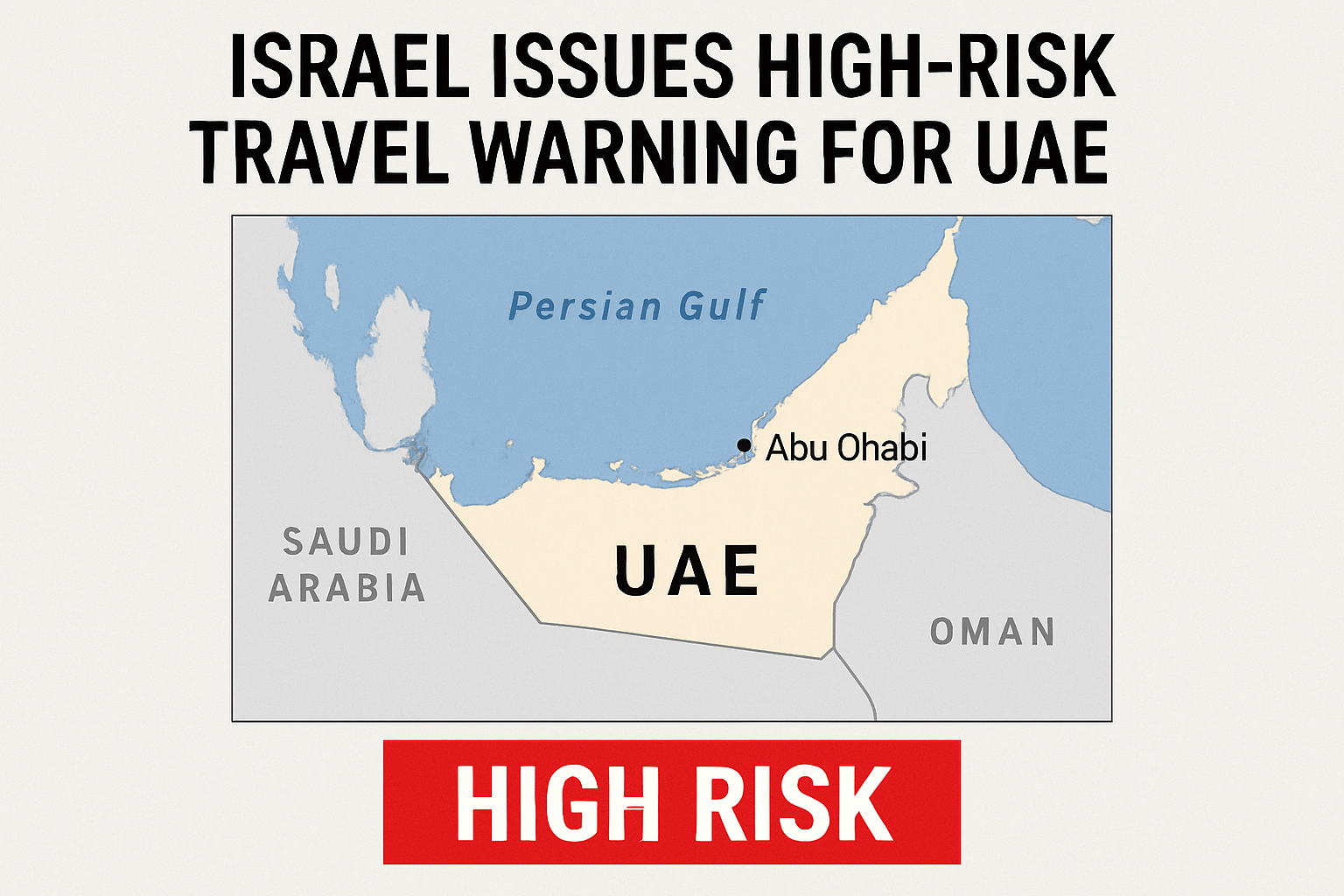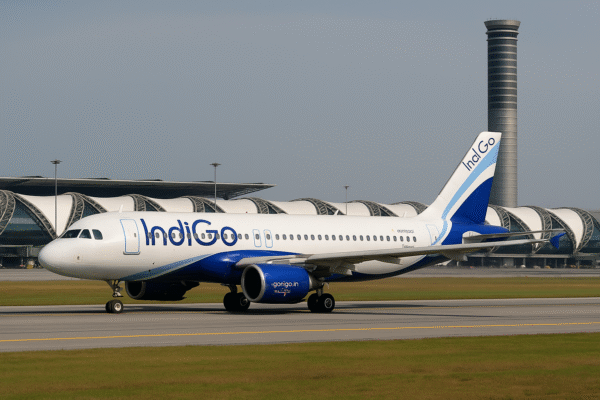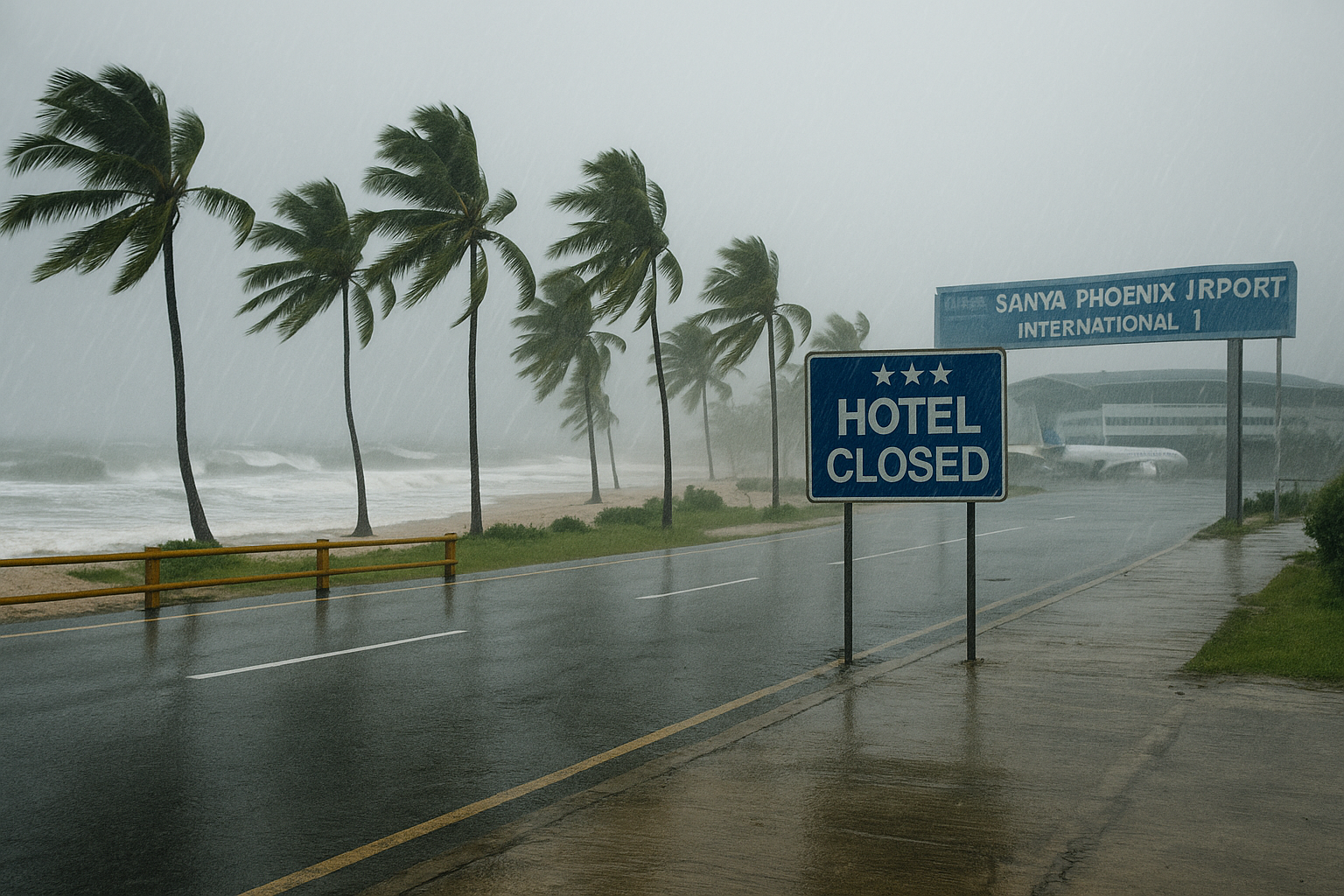Hainan, China — June 15, 2025 — What was expected to be a typical summer travel weekend in southern China has instead become a tourism disaster. Typhoon Wutip made a sudden and violent landfall on Hainan Island late Friday night, causing widespread travel chaos, flight disruptions, hotel lockdowns, and mass evacuations. The storm’s abrupt shift in trajectory caught authorities and travelers off guard, severely impacting the tourism economies of Hainan, Zhanjiang in Guangdong, and Eastern Guangxi.
Initially forecasted to hit Guangdong on Saturday, Wutip changed course rapidly, crashing ashore in Hainan, as a severe tropical storm with maximum sustained winds of 30 m/s (108 km/h). The shift forced immediate emergency responses across coastal regions and triggered widespread disruptions.
Typhoon Wutip makes Hainan: From Paradise to Disaster Zone
China’s “tropical paradise”, Hainan has been central to the country’s domestic and international tourism recovery strategy. However, Wutip’s landfall transformed Sanya and surrounding tourist areas into a storm-ravaged ghost town overnight. Streets flooded, trees toppled, and resorts once buzzing with guests were forced into emergency mode.
Sanya Phoenix International Airport, a major gateway for holidaymakers, suspended all flights as the storm intensified. Dozens of inbound and outbound flights were canceled, leaving thousands of travelers stranded. Many resorted to sleeping in terminals and bus seats—only to face transportation shutdowns across the island.
Tourism Comes to a Standstill for Typhoon Wutip
As the typhoon swept across the island, local authorities shut down all tourist attractions, including beaches, theme parks, and historical sites. Public beaches were cleared, and hotel staff worked rapidly to relocate guests away from vulnerable areas such as oceanfront suites and villas.
Hotels in Sanya, particularly along the coastline, enacted crisis protocols—sealing off windows, moving guests to interior rooms, and preparing for possible evacuations. Several upscale resorts, including international brands, paused new bookings and began processing refunds and rebookings for impacted travelers.
With Sanya typically welcoming over 20 million tourists annually, the storm’s timing during the early summer season is a severe blow to its hospitality-driven economy.
Chaos Extends to Guangdong and Guangxi
Wutip didn’t stop with Hainan. As it tracked inland, Zhanjiang in Guangdong Province and cities in Eastern Guangxibegan experiencing torrential rain, strong winds, and severe flooding. Authorities in Guangdong swiftly evacuated over 10,000 residents, shut down ports and ferry operations, and suspended schools.
This rare early-season typhoon is now only the second in 70 years to make a primary landfall in Hainan before striking the mainland. Its unpredictability has raised urgent questions around the accuracy of storm forecasting systems and the preparedness of tourism-dependent cities.
Digital Disruptions Add to Traveller Anxiety
As the storm battered infrastructure, internet connectivity and mobile networks failed across parts of Hainan’s western townships. Visitors and locals struggled to access emergency updates or make travel changes. Mobile apps for hotels, ride-sharing, and airline check-ins became unreliable,especially for non-Mandarin-speaking travelers.
Booking platforms crashed. Navigation apps failed. And many tourists, unfamiliar with local protocols, were left confused and isolated amid deteriorating conditions.
Economic Losses Mount as Travel Grinds to a Halt due to Wutip
Wutip’s sudden onslaught is expected to cost the regional tourism industry millions of dollars in lost revenue. Industry analysts predict the hospitality, transportation, and local vendor sector—will suffer major short-term setbacks.
Popular with high-net-worth individuals, Sanya’s luxury tourism market is facing heavy booking cancellations and refund demands. Tour operators, cruise companies, and airlines serving the region have already begun issuing travel advisories, cancellation waivers, and rebooking options.
In addition to economic losses, the emotional toll on travelers and the damage to brand confidence for luxury destinations like Sanya may have lingering effects.
Government and Emergency Response Swiftly Mobilized for Typhoon Wutip
Chinese authorities responded rapidly. Emergency shelters were set up across Hainan, Zhanjiang, and vulnerable Guangxi towns. Search and rescue teams were dispatched to remote areas. Meteorological services issued real-time tracking alerts, urging residents and travelers to remain indoors and avoid non-essential travel.
Despite the extensive damage, early reports suggest that casualties have been minimized, thanks to fast action and community preparedness.
However, with Wutip’s rains now soaking mountainous inland regions, authorities warn of potential landslides and flash floods, particularly near rivers and valleys in Guangxi. More evacuations may be necessary depending on rainfall over the coming days.
Travelers Urged to Delay or Rebook Trips
The China Meteorological Administration continues to monitor the storm’s progression. Tourists planning visits to Hainan, Guangdong, or Guangxi are strongly advised to delay or reschedule their trips. Major airlines are offering flexible change policies, and tour operators are prioritizing customer service to manage the growing volume of change and refund requests.
Airports in Guangzhou, Haikou, and Nanning remain on high alert, with ongoing weather-induced flight delays. Passengers are urged to check flight statuses regularly and confirm hotel or local transit availability before proceeding with travel plans.
Conclusion: Wutip’s Sudden Strike Exposes Fragility of Coastal Travel Networks
Typhoon Wutip has underscored the fragility of southern China’s tourism infrastructure in the face of natural disasters. What began as a mild offshore weather system rapidly evolved into a storm that disrupted an entire region’s transportation, hospitality, and digital ecosystems.
While recovery efforts are now underway, the storm leaves behind a trail of disruption and hard lessons for emergency planning. For travelers, authorities, and tourism stakeholders, Wutip serves as a stark reminder of the importance of readiness, flexibility, and information access in times of crisis.
The coming days will focus on rebuilding and recovery—but for thousands caught in its path, Wutip has already left an indelible mark on their travel memories.






















